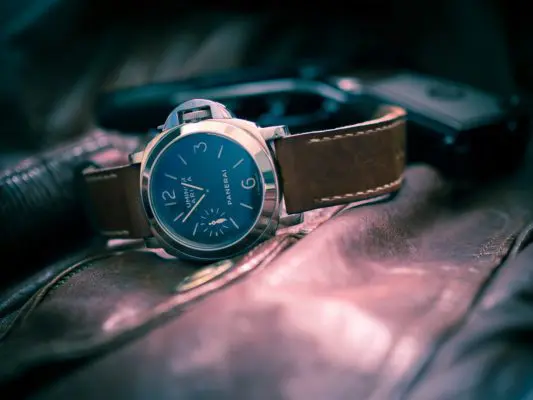Each material offers unique qualities that can enhance your watch-wearing experience. Photo: Unsplash
When it comes to luxury watches, the materials used in their construction are as important as the craftsmanship itself. The choice of material not only affects the watch’s aesthetics but also its durability, weight, and value. From robust steel to opulent platinum, understanding these materials can help you make an informed decision when purchasing a luxury timepiece. Here’s a guide to some of the most commonly used materials in high-end watches.
Steel: The Foundation of Modern Watchmaking
Steel is one of the most popular materials used in luxury watches due to its strength, durability, and versatility. Stainless steel, in particular, is favoured for its resistance to corrosion and scratches, making it an ideal choice for everyday wear. Watches like the Cartier Pasha are great examples of how steel can be used to create timeless designs that are both elegant and functional. Steel watches are often more affordable than those made from precious metals, yet they offer a level of durability that makes them a practical choice for any collection.
Platinum: The Pinnacle of Luxury
Platinum is a rare and highly valued metal in the world of luxury watchmaking. Known for its density and weight, platinum has a distinctive heft that sets it apart from other materials. It is also incredibly resistant to tarnish and corrosion, ensuring that a platinum watch remains pristine for decades. The Rolex Daytona in Platinum is a prime example of a watch that exudes luxury and exclusivity. Its icy-blue dial, coupled with the unique properties of platinum, makes it a coveted piece among collectors. Platinum watches are often produced in limited quantities, adding to their allure and investment potential.
Gold: A Symbol of Timeless Elegance
Gold has been used in watchmaking for centuries and remains a symbol of luxury and prestige. Available in various hues, including yellow, white, and rose gold, this precious metal adds a touch of opulence to any timepiece. Watches crafted from gold, such as the Audemars Piguet Perpetual Calendar are often chosen for special occasions or as heirloom pieces due to their enduring value. The warmth and richness of gold make it a favourite for those who appreciate classic elegance in their watches.
Titanium: The Modern Marvel
Titanium is a relatively recent addition to luxury watch materials, known for its lightweight properties and impressive strength. It is highly resistant to rust and corrosion, making it an excellent choice for sports and dive watches. Despite its strength, titanium is significantly lighter than steel, offering comfort without sacrificing durability. Many luxury watch brands now offer models made from titanium, catering to those who seek a modern, high-performance material. One of such example would be the Panerai Luminor Lo Scienziato 1950 Tourbillon GMT Titanio, which we have in limited stock.
Ceramic: The Fusion of Durability and Style
Ceramic is another innovative material that has gained popularity in luxury watchmaking. Known for its scratch resistance and smooth finish, ceramic watches are both durable and stylish. The material can be produced in various colours, allowing for unique and contemporary designs. Ceramic is also hypoallergenic, making it a suitable option for those with sensitive skin.
Understand The Materials Before Purchasing
Understanding the materials used in luxury watches is key to making an informed purchase. Whether you prefer the robustness of steel, the opulence of platinum, or the modern appeal of titanium and ceramic, each material offers unique qualities that can enhance your watch-wearing experience. By considering factors like durability, weight, and aesthetic appeal, you can choose a watch that not only suits your style but also stands the test of time.
To understand more about watch materials before you make an informed purchase, visit JPendulum at Far East Plaza today.

